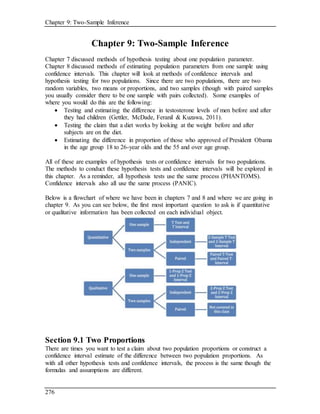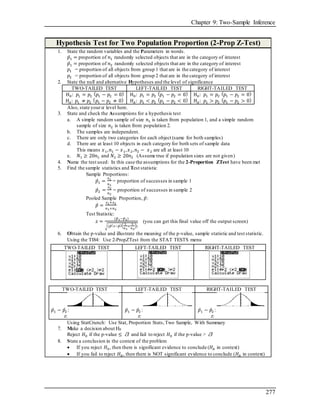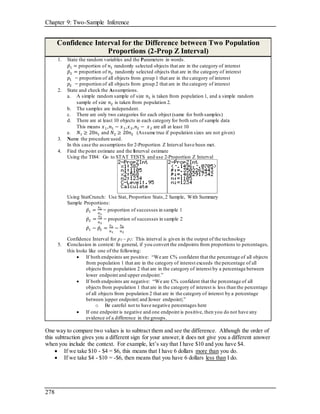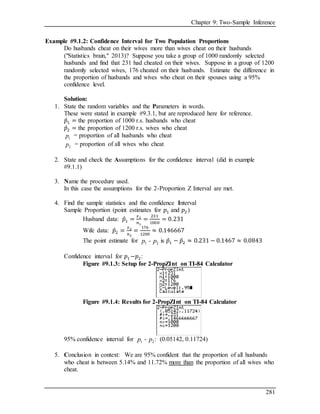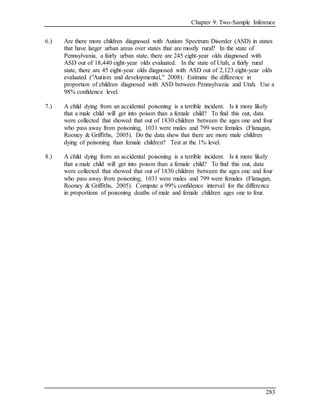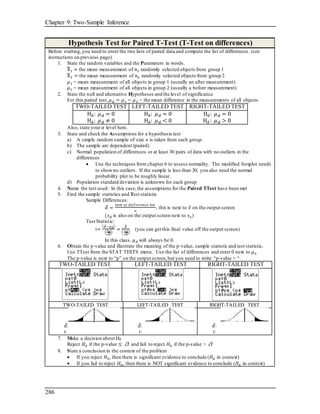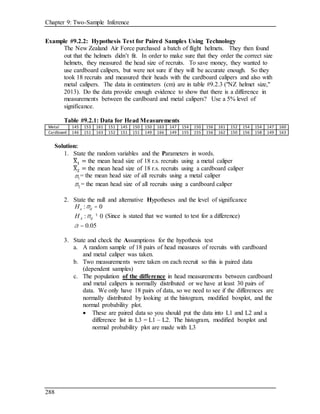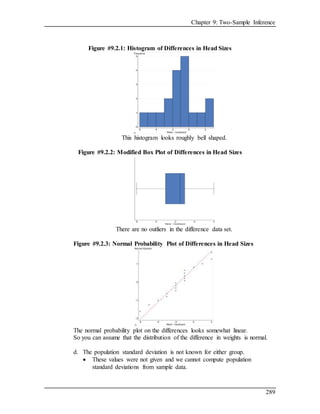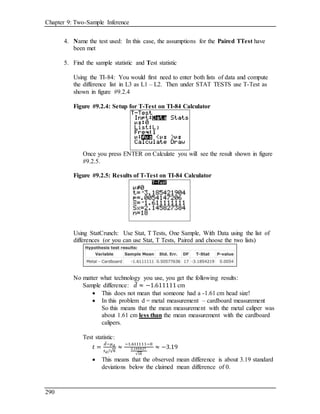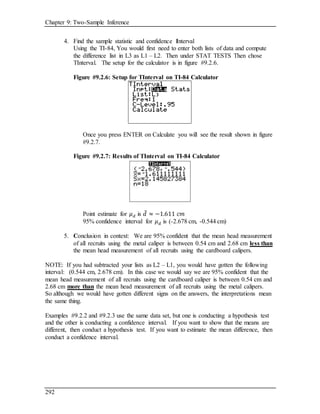This chapter discusses methods for hypothesis testing and constructing confidence intervals for two populations or groups. It provides examples comparing testosterone levels before and after having children, weight loss from a diet, and approval ratings between age groups. The chapter explores the processes and formulas for hypothesis tests and confidence intervals involving two proportions, including a worked example comparing reported rates of cheating between husbands and wives.
